There are a handful of artists I turn to whenever I need inspiration or motivation. Joaquín Sorolla (1863-1923) is one of them. His luscious brushwork and seductive use of color always prompt me to pick up a brush and tackle the next painting.
- Key Facts, Events, and Ideas
- Sorolla’s Process
- Color and Light
- Meticulous Drawing
- Sorolla the Masterworks and the Paris Years
- A Closer Look at Some of His Other Paintings
- Key Takeaways
- Additional Readings and Sources
- Want to Learn More?
- Thanks for Reading!

(Before diving into this post, make sure to pick up a copy of my free Landscape Painting Starter Kit.)
Key Facts, Events, and Ideas
Sorolla was a prolific painter and one of the lucky few who experienced the fruits of success during their lifetime. It is difficult to summarize his life and achievements in just a few bullet points, but here we go:
- If there is such a thing as natural talent, he had it in spades. He started practicing around the age of 9. By 15, he was accepted to the Academy of San Carlos, and by his early 20s, he was painting masterpieces like Defence of the Monteleon Artillery Barracks (below).

- One of his first major successes came in 1892 when Another Margarita (below) placed first at both the Madrid National Exhibition and subsequently the Chicago International Exhibition. It depicts a woman arrested for the murder of her child being transported by authorities. Sorolla actually witnessed her being transported (source). There is a glimpse of her chained hands and the tense expression on her face. Take note of the subtlety here-Sorolla does not shove it down our throats!

- His style was unique, with influences from the Old Masters and his Impressionist contemporaries. He had this to say about Diego Velázquez in particular:
“If ever a painter wrought a miracle of illusion with brush and pigment that painter was Velazquez in his ‘Las Meninas,’ at the Prado in Madrid. Now, I have studied this picture with a lens, and what do I find? Why, that Velazquez got that marvelous atmospheric background by one broad sweep of his flowing brush, charged with thin color so thin that you can feel the very texture of the canvas through it. Nature, the sun itself, produces color effects on this same principle, but instantaneously. The impression of these evanescent visions is what we make desperate attempts to catch and fix by any means at hand. At such moments I am unconscious of materials, of style, of rules, of everything that intervenes between my perception and the object or idea perceived. No, mes amis, impressionism is not charlatanry, nor a formula, nor a school. I should say rather it is the bold resolve to throw all those things overboard.”
- He painted mostly outdoors, under sunlight and exposed to the elements. He did this even for many of his portraits, which are typically painted in the comforts of a studio.
“As far as outdoor work is concerned, a studio is only a garage; a place in which to store pictures and repair them, never a place in which to paint them.”

- In 1911, he started work on “The Vision of Spain”, a series of massive paintings that celebrate Spanish culture, commissioned by the Hispanic Society. It dominated the mature end of Sorolla’s career, taking around eight years to complete. Castilla (below) was the first in the series. And below that is one of his sketches done in preparation for the series.


- He died in 1923, after suffering a stroke three years prior. His house is now a museum (Museum Sorolla) showcasing his life’s work.
Sorolla’s Process
“I could not paint at all if I had to paint slowly. Every effect is so transient, it must be rapidly painted.”
Sorolla painted fast, usually outside and fashionably dressed. Perhaps the best description I have come across is that he painted “like a pig eats” (from a discussion on Wet Canvas).
His flawless technique allowed him this privilege. Painting fast at the sacrifice of control is a recipe for disaster.
It is also worth noting that Sorolla went to “great lengths to make it look dashed off and easy” as James Gurney put it. There are numerous photos of Sorolla painting under the glaring sun with temporary walls, umbrellas, a giant easel, ropes and supports to brace the canvas, assistants, you name it. Anything but spontaneous…

The painting below gives you an indication of how he painted. The bleeding paint in the bottom left suggests he started with thinned paint and blocked-in the general color shapes, before refining the painting.

The following quote suggests he attacked most paintings without a detailed plan. This may be why his compositions appear so natural and inviting.
“Go to nature with no parti pris. You should not know what your picture is to look like until it is done. Just see the picture that is coming.”
He worked alla prima (wet on wet), with large brushes to match the large canvas sizes. But painting in this way was not without logistical challenges:
“The great difficulty with large canvases is that they should by right be painted as fast as a sketch. By speed only can you gain an appearance of fleeting effect. But to paint a three yard canvas with the same dispatch as one of ten inches is well-nigh impossible.”

Color and Light
Sorolla used a bright palette, perhaps inspired by the Impressionists. At the very least, we know he was inspired by their use of violet with the following backhanded compliment:
“With all its excesses, the modern impressionistic movement has given us one discovery, the color violet. It is the only discovery of importance in the art world since Velazquez.”
For his outdoor paintings, his palette included cobalt violet, rose madder, all cadmium reds, cadmium orange, all cadmium yellows, yellow ochre, chrome green, viridian, Prussian blue, cobalt blue, French ultramarine, and lead white (according to Charles Sovek). His portrait palette extended to include black and earth tones.
The best way to learn and understand Sorolla’s use of color is to see it in action.
Curious Child (below) is a stunning example of his ability to paint the illusion of light. You can almost feel the warm sunlight through the painting.
Here are some key observations (I will try not to get lost in technical analysis, as it is sometimes best to just sit back and appreciate art like this):
- The darks are colorful and around the middle of the value scale.
- There is a pleasing contrast between warm lights and cool darks.
- It seems Sorolla used rather thick paint for the lights and thin paint for the darks, reiterating the contrast.
- The loose brushwork works with the glaring sunlight (we squint when the light is too strong).
The following quote is also rather fitting:
“I hate darkness. Claude Monet once said that painting in general did not have light enough in it. I agree with him. We painters, however, can never reproduce sunlight as it really is. I can only approach the truth of it.”

Here is a similar painting, but with softer colors.

You can see Sorolla’s fondness for violet in this painting. Also, take note of how rich the skin tones are-he seems to get away with using such strong colors without it coming across as jarring or overdone.

He painted Galicia in his later years. What a beautiful play of color and activity. The negative space (the exposed water and mountains) is particularly important, with the rich blues and purples pulling you through and providing a break from the busy foreground.

Meticulous Drawing
“The older I become, the more I realize that drawing is the most important of all the problems of picture-making.”
Drawing was the foundation of Sorolla’s skill set. It allowed him to paint so fast and fluently, whilst maintaining control. Here are some great examples of his drawing prowess:



Sorolla the Masterworks and the Paris Years

I recently purchased two hardcover books that display some of Sorolla’s beautiful work: Sorolla the Masterworks and Sorolla and the Paris Years published by Skira Rizzoli. Great investments if you enjoy Sorolla’s work. Below are some snapshots.





A Closer Look at Some of His Other Paintings
Nude is a masterclass on how to paint fabric. It is amazing what Sorolla was able to do with just a few colors, a brush, and a canvas. As for the female figure, notice the use of soft edges to accentuate the curves.

Mother is one of his more subtle works. A beautiful demonstration of balance and relativity.

My Family was perhaps influenced by Velázquez’s Las Meninas, with the mirror reflection and the artist’s inclusion in the painting.

Sorolla’s landscapes and seascapes have an Impressionist feel, with broken color and fleeting brushwork.



Key Takeaways
- Learn from master painters, as Sorolla did from Velázquez and, to a lesser extent, the Impressionists.
- Paint on large canvases to command attention and to free-up your style (small paintings can lead to tight and timid painting).
- Try working outside under sunlight and exposed to the elements. It worked for Sorolla.
- Sorolla’s work may look spontaneous, but don’t ignore the amount of work that went on behind the scenes.
- Painting fast at the sacrifice of control is a recipe for disaster. Sorolla was able to paint so fast because of his flawless technique.
- Challenge yourself-do not get caught up painting timid and simple compositions.
- Drawing is the foundation of realistic paintings.

Additional Readings and Sources
Gurney Journey – Photos of Sorolla Painting
Gurney Journey – Sorolla Painting on the Beach
National Gallery – What You Need to Know About Sorolla
Want to Learn More?
You might be interested in my Painting Academy course. I’ll walk you through the time-tested fundamentals of painting. It’s perfect for absolute beginner to intermediate painters.
Thanks for Reading!
I appreciate you taking the time to read this post and I hope you found it helpful. Feel free to share it with friends.
Happy painting!
Dan Scott

Draw Paint Academy


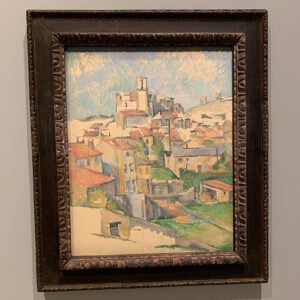
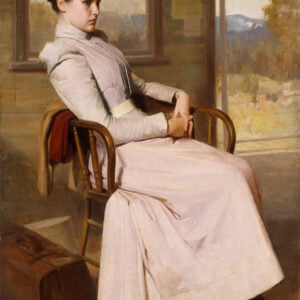
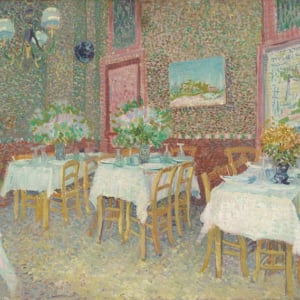
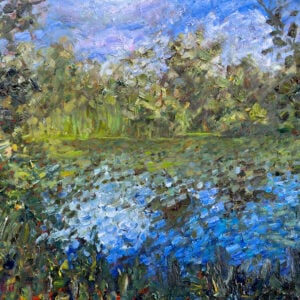
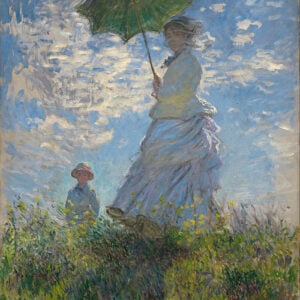
Thank you for this insight. I was fortunate enough to see the Sorolls exhibition in London last year.
It was breath-taking. The painting of the disabled boys on the beach reduced me to tears. A bit embarrassing but who cares
Since then he has been my absolute favourite artist.
Alison
So refreshing, even enough to love the direction of where the paint will take me today.
Thank You.
Bob Durocher
How uplifting to read about Sorolla and to see his exciting use of light and darkness. As we go through these critical times in the world, we all need to have something that brightens our own personal world. Thank you, Dan. It’s so appreciated.
Good advice
In addition to being an artist, you are a born teacher. I never heard of Sorolla. I can’t understand why he didn’t have the degree of recognition that others enjoyed He was extremely versatile. All stunning!
Also, know that I did squint at the yellow slash of light in the Curious Child. I’m working on a sunset and I can’t even sadly compare in anyway.
You inspire me to keep working! Thank you for sharing your gifts!!!!!
I like Sorolla because he painted FAST…. A teacher told me “if you want to LEARN …..paint doing IT FAST .- I am following the advise ….and to do it better is good to use Long BRUSHES.-
I’m still learning and still have so very much to learn, but using long brushes was a genuine revelation for me!! And…standing up while I paint!! Two things that have helped me so much!!!
Me too! What a painter!
I saw the same exhibition in the National Gallery – The highlight of the year. I recognise most of the paintings – Nude an Mother are absolutely exquisite when you see the originals.
Surprised you have not included the Women repairing fishing net (currently in Venice) as use of light was awesome.
Somewhere in the catalogue was a comment attributed to Monet who said he had mastered light better than him.
All of these pictures look good on an iPhone, but in the flesh they are truly awe inspiring.
See if you can.
Thanks for the analysis
Brilliant works and it gives me great pleasure to receive your news, help and information to all artists out there.
In this particularly daunting and worrying time and for all of us confined to our homes you are an inspiration. I haven’t picked up a brush for years but seeing your email this morning has given me such motivation. I will start my own masterpiece today.
Thank you Dan
Take care and be safe
This has been a wonderful post. Since you introduced me to Sorolla’s work I have been seeking out more information, you have put so much into one post😃. The variety And immediacy of his work is stunning.
Many thanks for your generosity in sending this video. A delight to explore the paintings of this genius. I do icons which is very disciplined but am drawn to freedom and colour. Might try something tto combine the two. Blessings
A wonderful post!!!!!!
Thank you so much
Varda
Wonderful article. I am still mesmerized by the painting Nude I saw at the Meadows Museum in Dallas a few months ago. I agree 100% with your appreciation of his art.
Thanks for this and all your articles!
Great article Dan. I too saw his exhibition in London, which was masterful. One really needs to see the live paintings to appreciate his brushwork, sense of light….and scale! Huge works. Ian
I enjoyed reading your post ,and thanks for introducing me to Sorolla,I am re entering the art world In my semi retirement and find your posts like this so interesting and educational…
Very interesting and educational post!
Thank you so much for this post. I have scrolled through and will enjoy spending an hour or so later to read and learn what I can from the pictures here. My brief, preliminary study of his colours and brushwork are inspiring and will ensure I go to my studio this weekend. Sorolla is a new ‘find’ for me.
Took me right back to the Sorolla exhibition in Dublin’s National Gallery Last year. Thank you for this worderful post. A trip to Madrid is out of the question now so your virtual one is much appreciated.
I agree! The exhibition in National Gallery Of Ireland was a pure pleasure last summer! Thanks for the recap.
Wonderful overview of one of the best colorists to ever paint! Thank you!
Gran bell’articolo, grazie.
Wonderful post!
A beautiful and soothing breeze of colours and creativity in this troubled times.
Thank you so much!
I was lucky to be in Ireland last year visiting friends when an exhibition of Sorolla’s work was being shown in Dublin…..sublime, I have his books on my wish list…..thank you for the reminder through your wonderful post. I really didn’t know his work very well, but have become a huge fan….thank you!
Great article! I often find it quite hard to grasp every aspect of a painting when viewing it. You manage to point out just what makes a painting so good, elements that would have slipped by me now give me goosebumps at times. Great writing style too!
Thank you for these awesome insights!
Drawing is so important. Underlies everything. Thanks for the article, he’s a magnificent painter.
I hadn’t heard of Sarolla and his paintings and was just carried away by his beautiful colours. Will look him up now for more NFL’s. Thank you very much.
My very favorite #1 artist of all time. It breaks my heart that I’ll probably never paint like Sorolla. I tried two small paints of his. Beached Boats and Women Walking on The Beach. They were a blast to try to paint. Thalo blue is a must.
I inly recently discovered this wonderful painter and was completely overwhelmed and embraced his use of color and process, would have loved to have seen his exhibition in London recently, thank you for these great notes and samples. Pursuing his technique of looseness and use color right now, luv the violet.
Thank-you for this wonderful post and your insight. I am not a painter but your posts have aided me in beginning to understand and appreciate art.
There aren’t words enough to express my appreciation for your time and gift of wisdom you share so beautiful…I devoured every painting, every word (lesson). You and Sorolla have given me the motivation to paint outside in full sun and capture the natural beauty— Which so often goes unnoticed, unless it is painted.
Thank you Dan.
Thank you for sharing this wonderful insight , made me get more energized to continue painting!!
Love this man’s works…glorious!
Each one so beautiful. I, too am drawn to violets and blues and learning to control them!!
Thank you so much…
Sargent’s watercolors had always been my high mark for quality. Sorolla is now my second roll model for brush work. Brilliant.
I used to paint with acrylics, but I’m trying watercolors now. I have a feeling I’ll be switching back. I had so much more success with acrylics. JMW Turner has been my favorite artist. As I looked at these incredible paintings, I found so much that took my breath away. His brushwork, his colors, his many different subjects—–brilliant! Thank you so much for sharing this with me.
This is amazing and lifted my spirits on this sagging day. I will save it and look at it every morning—good way to start the day–Many warm thanks
Thank you so much for this post! I wasn’t aware of him at all and enjoyed it so much. I wonder if his flamboyant use of color and brush strokes matched his personality. I always look forward to your educational posts!
Wow I enjoyed that SO much. Thank you Dan.
Thank you so much for this post. Just the inspiration needed to get out & paint!
loved this artist i was not familiar with him at all……..thank you
Thank you Dan. As always you bring such a wealth of knowledge to the forefront of an artists work. You are one of the most excellent teachers I’ve been blessed to come across in my years. I love this artists work. I share in the artists love of using bright colors. i would agree with this master artist that sketching is an invaluable tool upon the canvas to keep the artists focus and really helps to create that masterpiece. Thank you for this post it was very enjoyable. Nice to have some creative distraction at this time when the worlds focus has been upon the corona virus. Stay healthy and well. Blessings
Thank you Dan. I love his work. I was at the Prado in front of the two little kids in the sea. I’m fluent in Spanish so I asked the guard if I could stand in front of this ptg and try to copy it. It’s about 5’x6’. I started to paint and an officious little sticky female guard came in an asked me if I had a permit. I smilingly indicated I didnt understand. She went to the guard and chewed him out for allowing me to paint with my quarter sheet paper and tiny WN box of paint.
She came back to me gesturing wildly to pack up and leave. I gestured does sorry, busy painting.she left I asked the guard what to do He answered keep painting. She’s a grouch. She came back I was nearly through l. Took my brush out of my hand. I stood up got all my tools and thank the nice guard, in perfect Spanish
Good story.
The nice guard obviously loves art.
Very well written. I certainly enjoyed all your insight. Thank you for sharing.
Thanks for this important learning piece of information . I will share it with my painting friends .
Sergio Eduardo Morales http://www.pincelchie.cl
Breathtaking art. Such genius. How fortunate are we to have the ability through you Dan to experience this beauty. Thank you.
Dan thank you for reminding me.
Sorolla is my favourite Artist and many years ago I purchased his Book ‘The Masterworks’
so now I have bought ‘Sorolla and the Paris Years for £20.00 on Amazon UK.
I am inspired to paint more and better after each of your inspiring posts. Thanks for introducing me to Sorolla and other artists.
Enjoyment, education and inspiration. Thanks so much.
Thanks Dan, keep send your news and tips, they are most interesting and appreciated
Thank you for these insights. I needed this. If I can apply these insights, it will transform my paintings. I look forward to giving them a try!
Thank you Dan! What a pleasure and a joy to see this gifted artists’ works!
Sunlight and color soft and bold, compelling subjects..all inspiration. I love receiving your emails…please keep them coming.
Dan , Thanks for all the good stuff you send out.. I really appreciate it.. Helps me keep on trying..
regard,
Glenda
Dan I appreciate all your Posts. I Learn a lot and they keep me trying harder.. Thanks so much.
Regards,
Glenda
Thankyou Dan, so inspirational, what a great way to start being in isolation for a while, will try and put the time to good use.
Wow, just beautiful loved looking and studying the pictures
Thanks so much for sharing
Thank you very much for sharing❤️
Amazing colour and brush work thank you for sharing great read.
Wow thank you so much for sharing this breathtaking man’s painting throughout his lifetime ❤
I love sorolla’s Painting style. I lived in Spain for a while, and had the pleasure of seeing his Hispanic exhibition in Valencia – wonderful!
I have now seen two of your insights into painters, and find them very interesting indeed. Thank you.
Thoroughly enjoyed this! Thank you! I, like a few others, was fortunate to see his exhibition in Dublin in September! It brought me to tears! Absolutely incredible. Thank you again for sharing your research. It is most appreciated.
Sorolla is and has been my all time favorite painter. Just adore him, his sense of playful motion, dancing strokes. His feeling for light and vibrant alive beach scenes are favorites and I look to him often for ways to improve what I do. I think now I need to buy one of the books chuck full of prints. He brings joy.
WOW! Dan, thank you so much for introducing me to Sorolla. Another artist to place in my ‘box’ of treasured artists. I was so blown away with ‘Elena among the Roses’ that I forgot to look at his brushwork. I loved the way he captured the warmth and glow of the roses and the afternoon light… I could almost smell the fragrance of the roses and hear the buzz of insects. I really appreciate what he could do with his knowledge of colour. I was startled to read that he did not expect his planned sketches to be replicas of the final outcome. What a relief! He sounds very sensible. Anyway I feel my latent talent has been watered at the altar of Sorolla’s magnificence. Thank you for a great post.
Muchas gracias por esta presentacion del Maestro Sorolla, ver sus cuadros es perderse en ellos.
Sus colores son unicos, mas vibrantes aun que en la realidad, el dominio de la luz …del sol..es magia, el agua se mueve, es fascinante. Como es que ese color esta ahi?…De donde salio?
Ha quedarse en casa, y cuidarse. Un placer recibir sus presentaciones.
I ate up every painting and words you put on this post. Thank you, I know that this takes time and I appreciate this and all of your site.
Thanks for remembering this great painter, I live in Madrid near the Sorolla house-museum. I often go to visit the exhibitions and the activities they organize, unfortunately now we have to stay at home and we have to content ourselves with seeing everything through the computer screen …
Thank you, Dan, for this wonderful article! Sorolla is probably my favorite artist, if I had to name one. I was so fortunate to be able to view his work at the Hispanic Society in New York City several years ago and was completely mesmerized! The sheer size of his paintings was unbelievable! But his mastery of light and shadow, the figure and his use of color were all incredible to see in person. Thanks again for the inspiration!
Thank you Dan for giving us the benefit of seeing such an incredible artist. I enjoyed everything!
Dear Dan
Ley me Express in my mother languaje
Es una excelente clase de arte dedicada a un gran artista
Hace tiempo que estoy peleando con uno de sus cuadros, dos figuras femeninas, su mujer y su hija paseando en una ventosa y soleada playa, ambas con elegante guardarropa
Sus observaciones sobre la importancia del dibujo, la gama de colores usados, especialmente el violeta, la pasión por la luz, todo me está ayudando a replantear mi ambicioso proyecto
Donde creo no tener chance es lo relativo a la velocidad, pero lo intentaré
Gracias por todo lo que nos brinda
Un verdadero maestro!
Escribo en español porque soy chileno. Me gusta Sorolla porque PINTA RAPIDO Y DEJA ALGO A LA IMAGINACION DEL OBSERVADOR.
Me he fijado que para pintar suelto y a la prima, Sorolla usaba pinceles con mangos muy largo capturando la luz y el ambiente de una manera espectacular. Estoy desarrollando un proyecto para fomentar la pintura en los Colegios y quedan invitados a participar como maestros , como aficionados o como Colegios. http://www.pincelchile.cl pintores chilenos en linea.
Thank you for this introduction to Sorolla. What amazing work with unrestrained brush strokes. His use of colour is so enlightening. So enjoyed reading about his life and work.
Thank you for these excellent notes!
Once again you have helped motivate me. The talent shown here is mind boggling. The colours and brush work are amazing and a joy to study. It inspires me to keep practising in the hope that just maybe one day…
first was made aware of Sorolla by my pastel art teacher. Went to Madrid often but never heard of him. Went to his house museum, fell in love, went to Hispanic in NYC, overwhelmed with love and respect. I think he is the finest artist ever.
Thank you so much for this. As always your generosity inspires. I was wondering …what medium do you think he used for his sketch on that massive painting in this photograph: Joaquín Sorolla, Painting Clotilde in a Black Dress, 1905. Photograph by Christian Franzen. Charcoal? It doesn’t look like he is holding a brush…??
Thanks again Dan.
You give me a new appreciation for Sorolla!
Dan, thank you! What a wonderful introduction to artist that I was not familiar with. Sorolla is an inspiration. I hope I will see his work in person some day.
Please look for Sorolla watercolors.-
Thank you for sharing. Amazing talent like that is a gift from God. I’ll keep trying, but I’m already 85!
It takes a skill comparable to Sorolla’s to be able to show others how to appreciate Sorolla’s skills. I would not have looked twice at most of the photos. However, your comments made me look at them much more the twice and I intend to look at them in the future. Who is the Master here?
luscious brushwork is the perfect description for the work. His color and strokes are beautiful and wonderful. Thanks for sharing.
Marvelous!!!
Just seeing this wonderful lesson on Sorolla. Love his work. Inspiring me to get out there after awhile. Wonderful loose brushwork and color!